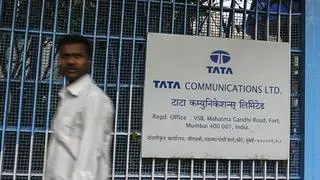You buy a call option because you have a view that the underlying is likely to move up. Managing the position thereafter is important. In this article, we discuss why you should consider rolling your position into higher strike options if you want to take full advantage of your view on the underlying.
Rolling up
Suppose you buy the next-week 16700 Nifty call for 82 points when the Nifty is trading at 16620. Further suppose you expect the Nifty to move to 16900 on or before the option expires. What should you do after buying the call option? You cannot hold your 16700 call till the underlying moves up to 16900 despite setting up the position for an upside of 280 points.
Why? You are trading European options; these options can be exercised only at expiry. The issue in keeping the long call till expiry is that you may lose a significantly portion of your unrealised gains if the underlying declines during this period.
The best strategy then would be to sell the option. Also, selling an option enables you to capture time value, which is not possible if you exercise the option.
But selling the option depends on its liquidity. At any point in time, three tradable strikes attract considerable attention on the Nifty Index- at-the-money (ATM) strike, the immediate out-the-money (OTM) strike and the immediate in-the-money (ITM) strike. For the Nifty index, this could be 16500, 16600 and 16700, given the underlying price of 16620. This is because traders are always balancing between paying too much to buy an option (deep ITMs are not actively traded) versus increasing the probability of the option ending ITM (so deep OTMs are not actively traded).
You are supposedly long the 16700 call that has lowest implied volatility among the three strikes. Note that the 16600 strike is deemed the ATM option as it is closest to the spot price. The 16700 call will become less actively traded when the Nifty is closer to 16800. That would be the optimal time to sell your long position in the 16700 call.
What should you do thereafter? If you have a view that the Nifty index will continue its uptrend, you should buy 16800 strike or 16900 strike, whichever has the lowest implied volatility. You can also choose the next expiry series when rolling into a higher strike option. Then follow the same process as you did with the 16700 strike. The objective when rolling into higher strikes is to take full advantage of your view on the underlying and yet maintain a position that is liquid.
Optional reading
There is a trade-off between intrinsic value and time value. Waiting till the index reaches 16800 would mean you will capture 100 points of intrinsic value. But time decay will drag down the option price with each passing day. Note that waiting for a further movement in the underlying could lead to 16700 call becoming less liquid, exposing you to high market risk.
If you want to capture as much time value as possible, you may have to sell before the index reaches 16800. But that would mean capturing lower intrinsic value. The optimal point is to let the Nifty reach one tradable strike from your long position; in this case, the 16800 call. This is because the increase in intrinsic value on the Nifty (assuming your positive outlook turns out to be right) is likely to be more than the time decay or theta (loss in option price with each passing day).
If you believe rolling into higher strikes would be difficult to manage, go long on the near-month futures. Your position will not suffer from theta, but you must trade with strict stop loss to manage the downside risk (due to symmetrical payoff) on futures.
The author offers training programmes for individuals to manage their personal investments








Comments
Comments have to be in English, and in full sentences. They cannot be abusive or personal. Please abide by our community guidelines for posting your comments.
We have migrated to a new commenting platform. If you are already a registered user of TheHindu Businessline and logged in, you may continue to engage with our articles. If you do not have an account please register and login to post comments. Users can access their older comments by logging into their accounts on Vuukle.